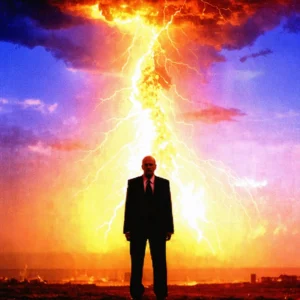
Introduction to the Historical Narrative
Michael Streeter’s Witchcraft: A Secret History offers a compelling narrative that combines historical facts with subtle marketing insights. The book targets readers who appreciate a businesslike tone and who wish to explore the rich traditions of witchcraft from ancient times to the modern era. Streeter creates an engaging pace, and his narrative delivers a well-structured historical review that both informs and entertains. This work bridges the gap between rigorous historical research and popular interest topics, ensuring a balanced outlook on centuries-old practices. With an inviting cover palette of black and orange, Streeter immediately captures the interest of readers while affirming the duality of mystery and fact embedded in his chronicle.
Marketing Perspective and Clickbait Elements
The book’s title employs the term “secret history,” a phrase that, even if overused in modern marketing, strategically piques curiosity. Streeter incorporates this provocative language to evoke interest and position his research as revealing hidden layers of a long misunderstood subject. Consequently, this marketing choice opens up discussions on how titles in various industries grab consumer attention. Many readers have encountered clickbait headlines, yet this work merges sensational elements with genuine academic value.
Moreover, the narrative cleverly integrates marketing techniques by:
- Highlighting key phrases that resonate with newcomers and enthusiasts alike.
- Balancing historical evidence with intriguing storytelling.
- Employing visual cues within the book’s design to maintain engagement and emphasis.
These characteristics not only establish a connection with readers but also amplify the book’s appeal in today’s competitive literary market.
Structural Overview of the Book
Streeter organizes the text into three main sections. Each part reveals a distinct epoch in the evolution of witchcraft and provides concise details through numerous subsections. The book covers:
- The Ancient World: This segment explores the origins of witchcraft, including topics like powerful goddesses and pre-Christian practices.
- The Medieval World: The narrative shifts focus to the era of Christianity, detailing the infamous Burning Times and the judicial persecution of alleged witches.
- The Modern World: Streeter presents the resurgence of witchcraft, touching upon modern covens, Wiccan traditions, and contemporary interpretations of ancient rites.
To illustrate the structure, observe the table below:
| Section | Key Themes | Highlighted Topics |
|---|---|---|
| Ancient World | Origins, Myth, and Lore | Goddesses, Early Rituals, Pre-Christian Beliefs |
| Medieval World | Transition, Conflict, Persecution | Christian Influence, Witch Trials, Sacrificial Traditions |
| Modern World | Revival, Identity, Adaptation | Wicca, Coven Structures, Contemporary Beliefs |
The structured layout of the book caters to both new and experienced readers, inviting them to explore how historical narratives have shaped the present-day understanding of witchcraft. Additionally, Streeter includes various historical images rendered in distinctive hues, which provide contextual background and enhance reader comprehension.
Historical Insight and Business Relevance
Streeter’s narrative carefully avoids presenting an overly academic tone, ensuring accessibility without sacrificing informed insights. As a former editor and experienced journalist, he crafts a story that respects both historical intricacies and modern interpretations. As a business narrative, the book exemplifies how storytelling drives consumer engagement and preserves cultural heritage. Streeter’s decisions remind us of numerous examples in business where historical legacy drives marketing innovation.
The book maintains a businesslike style through its clear and logical structure. Transition words such as “moreover,” “furthermore,” and “consequently” help the narrative flow naturally from one topic to the next. This smooth progression reinforces the importance of history in framing our current societal beliefs while opening doors for further discussion about the role of authenticity in marketing. Streeter manages to provide a clear summary of witchcraft’s evolution and supports his claims with narrative evidence. Importantly, the narrative integrates biases and symbology surrounding witchcraft, thus stimulating critical thinking among readers.
Analysis of Key Themes and Critique
Critical Examination of the Content
The analysis of Witchcraft: A Secret History consistently examines central themes such as the evolution of ritual practices, the impact of religious conflicts, and the adaptation of ancient traditions in modern society. Streeter focuses on:
- The transformation from secretive ancient practices to celebrated modern rituals.
- The evolution of social perception regarding witchcraft.
- The subtle influences exerted by cultural myths in shaping contemporary beliefs.
He effectively discusses prominent historical figures and mythological icons, inviting the reader to examine early deities like Lilitu and comparing them to modern representations in witchcraft communities. Alongside critical historical context, Streeter transparently presents both the achievements and limitations inherent within his narrative.
Critique from a Business Perspective
The approach in the book reinforces the effectiveness of certain marketing tools. The term “secret” remains a focal point because it generates curiosity and elevates potential market value. Simultaneously, the presentation avoids overstating details, ensuring readers enjoy a tangible balance between myth and reality. Business professionals can draw lessons from this strategy. For example, the use of carefully structured content not only supports brand storytelling but also lays a foundation for consumer trust. The narrative hints at future trends where historical legacy merges with modern techniques in retail and advertising.
Recommendations for Enthusiasts and Newcomers
The book suits both the curious and those who have already studied aspects of witchcraft and historical occult influences. It presents a layered approach that assumes prior baseline knowledge while offering fresh perspectives for new enthusiasts. Readers who have enjoyed similar titles can supplement their study with the following recommended works:
- A History of Magic, Witchcraft, and the Occult by DK
- The Salem Witch Trials: A Day-by-Day Chronicle of a Community Under Siege by Marilynne K. Roach
- The Witch: A History of Fear, from Ancient Times to the Present by Ronald Hutton
- Magic: A History: From Alchemy to Witchcraft, from the Ice Age to the Present by Chris Gosden
Each recommendation provides unique insights that deepen comprehension of witchcraft history. Additionally, the book’s accessible style encourages readers to expand their research through academic journals, online courses, and further literature. The inclusion of detailed chapters structured to facilitate comparison further underlines the business relevance in today’s competitive market for heritage storytelling.
Conclusion: Bridging History and Modern Interpretations
Ultimately, Witchcraft: A Secret History by Michael Streeter delivers a narrative that effortlessly bridges the chasm between historical investigation and modern marketing imperatives. The narrative moves at a brisk pace, enriched by critical subheadings, bullet lists, and tables that guide the reader through each era of witchcraft evolution. In this engaging exposition, Streeter wisely avoids excessive reliance on academic citations, thus appealing to an audience seeking both factual clarity and narrative freshness.
The book stands as an indispensable resource for individuals who wish to understand the transformation of mysticism over centuries. Business readers and cultural historians alike enjoy the synthesis presented in this work. Furthermore, Streeter’s history encourages dialogue regarding the balance between tradition and innovation in content creation. Ultimately, the review reassures readers that while the book may not unveil every “secret,” it enriches understanding and inspires further inquiry into the complex legacy of witchcraft.







